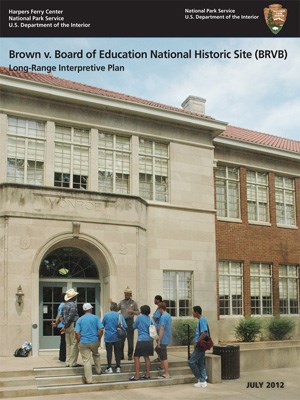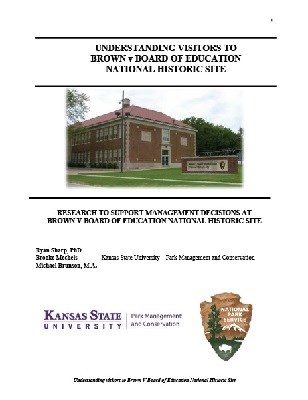|
National Park Service Mission Statement The National Park Service preserves unimpaired the natural and cultural resources of the national park system for the enjoyment, education and inspiration of this and future generations. The Park Service cooperates with partners to extend the benefits of natural and cultural resource conservation and outdoor recreation throughout this country and the world. Brown v. Board of Education NHP Mission Statement
Brown v. Board of Education NHP Vision Statement As a staff, we commit, individually and collectively, to:

Long-Range Interpretive Plan
"A Strong Pull, a Long Pull, and a Pull together: Topeka's Contribution to the campaign for School Desegregation" Historic Resource Study. This 1999 report chronicles the local Topeka class action law suit that gave its name to the Supreme Court Case Brown v. Board of Education, along with the national and historic context of the case, and its aftermath.

Visitor Report With an increased use of parks lately, understanding their social impact is vital to maintaining the value of Brown v Board of Education and parks like it. This study was designed to collect data about the visitor experience at Brown v Board of Education in Kansas inform management's ongoing planning process. |
Last updated: May 24, 2023
